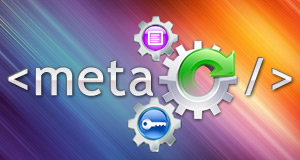
As companies grow internationally, it is now more important than ever to translate all website content and web-based assets in order to reach potential new customers and clients.
By having a translated website that speaks the languages of your target audiences, you can connect with these people on a deeper level which is more likely to result in conversions.
Most people only search and read information in their native language, so if your website is not in that language, people simply will not engage with it – and may not even find it in the first place.
So, now that you understand why website translation is so important, how should you go about it?
This blog post will go over three tips to make your website translation project more efficient!

1. Choose a content management system (CMS) with multilingual capabilities
If your CMS cannot handle multilingual content, you could face major problems, such as translated content displaying wrongly on the webpage or even breaking the page entirely.
Make sure that the CMS can handle right-to-left languages, as well as languages that use non-Latin alphabets such as Hebrew and Chinese.
WordPress, Contentful and Sitecore are all examples of CMSs that can handle multilingual content.
2. Remember to translate any images containing text
You might have banners, infographics or other images with text on them, which will all need to be translated if you want to use them to target a new market.
If you have a graphic designer in-house, you could ask your translation provider to produce a bilingual table with the original and translated text, so that you can edit the images yourself.
Alternatively, many translation providers will offer this as a service, if you do not have the time or the in-house resources to edit your images.
3. Consider SEO-translation
This is a workflow that combines SEO and translation into one step, enabling those all-important keywords to be inserted into the page content during the translation stage.
This allows the content to flow more naturally for the reader and means less work and money in the long run.
Many translation providers offer this option, so it is worth enquiring about at the start of a translation project.
I hope this blog post has given you a useful introduction to website translation. For more in-depth information and advice, read the full-length guide here. The guide outlines the following seven key areas to consider as part of your website translation and optimisation strategy:
- content management systems
- file formats and technology
- page content
- transactional assets
- graphic content
- SEO-translation
- online quality assurance (QA)
Samantha Brazel
Latest posts by Samantha Brazel (see all)
- An introduction to SEO-localisation - March 23, 2023
- 3 tips for achieving high-quality translations - March 21, 2023
- 3 tips to make website translation more efficient - May 18, 2022




